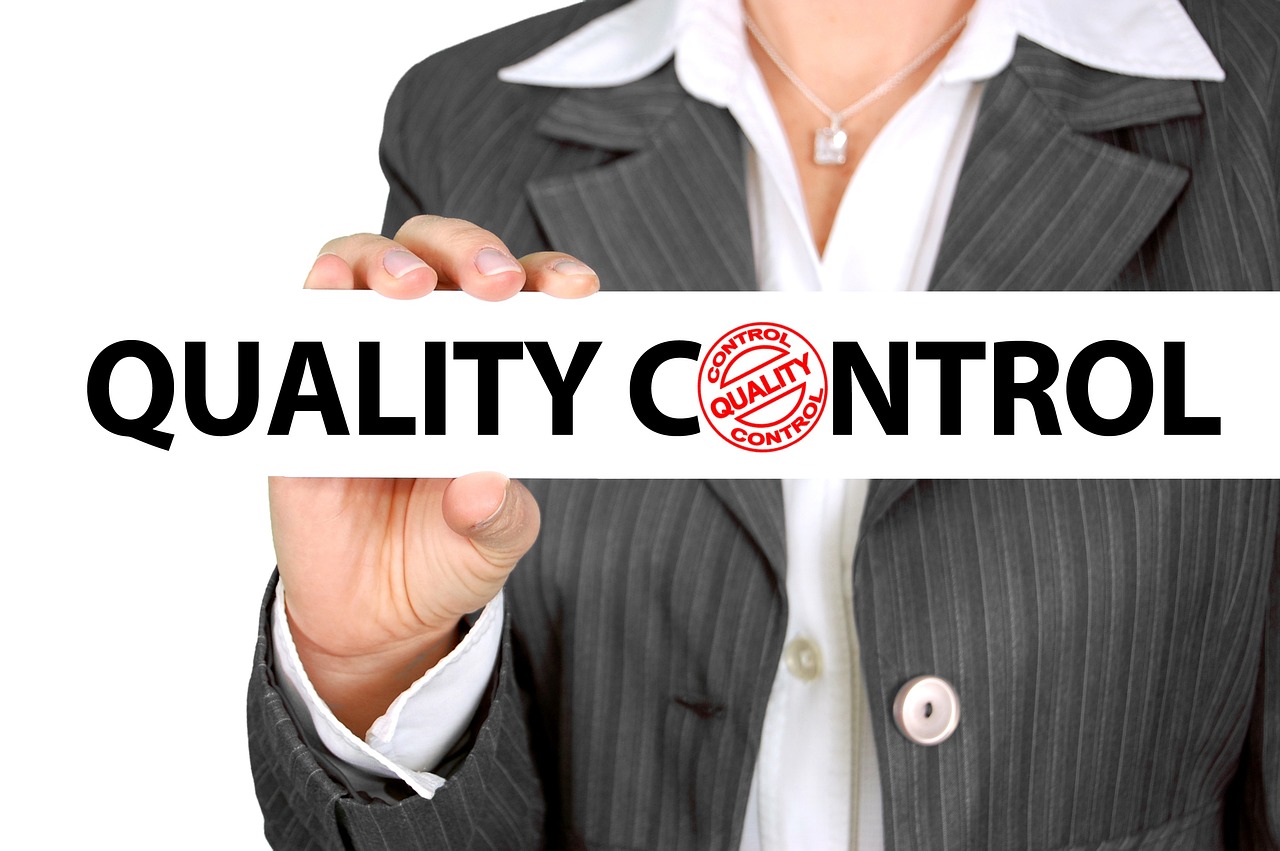How SMEs can save money and the planet with certifications

Imagine transforming your small or medium enterprise into a powerhouse of efficiency and sustainability. Certification can boost SMEs like yours by streamlining operations and enhancing credibility. Akitra, a leader in sustainable practices, shows how certifications lead to a big environmental impact and cost savings. You gain visibility and attract eco-conscious consumers. Seven out of ten customers prefer certified sustainable businesses. Akitra Academy offers insights into these benefits, empowering you to make impactful changes. Embrace certifications and watch your business thrive while contributing positively to the planet.
Understanding the Role of Certifications
In today's competitive business environment, certifications serve as a powerful tool for small and medium enterprises (SMEs) like yours. They not only enhance your credibility but also open doors to new opportunities. By obtaining a certification, you demonstrate your commitment to quality and sustainability, which can significantly boost your business's reputation.
What is Certification?
Certification is a formal recognition that your business meets specific standards set by an authoritative body. These standards often relate to quality, safety, or environmental practices. When you achieve certification, you gain a seal of approval that assures customers and stakeholders of your commitment to excellence. This process involves rigorous assessments and audits, ensuring that your operations align with industry best practices.
Importance of Sustainability Certifications for SMEs
The importance of sustainability certifications cannot be overstated. For SMEs, these certifications are more than just a badge of honor; they are a strategic asset. They help you align with environmental regulations and consumer expectations, making your business more attractive to eco-conscious customers. According to research, certified sustainable SMEs often experience significant growth, sometimes up to 2000%, compared to their non-certified counterparts.
Sustainability certifications also provide a competitive edge. They differentiate your business in the market, attracting not only customers but also investors and talented employees who value environmental responsibility. By promoting your certification, you position your SME as a leader in sustainability, fostering trust and loyalty among your audience.
Moreover, transitioning to sustainable practices through certification can lead to cost savings and revenue growth. By reducing your carbon footprint and improving resource efficiency, you not only contribute positively to the planet but also enhance your bottom line. This dual benefit makes sustainability certifications an essential component of long-term business success.
Environmental Benefits of Certifications

Certifications offer a pathway for small and medium enterprises (SMEs) to embrace sustainability while achieving significant environmental benefits. By focusing on reducing your carbon footprint, you not only contribute to global emission reduction targets but also gain a competitive edge in the market. Let's explore how certifications can help you achieve these goals.
Carbon Footprint Reduction Strategies
Understanding the carbon footprint meaning is crucial for any business aiming to make a positive environmental impact. Your carbon footprint represents the total greenhouse gas emissions caused directly or indirectly by your activities. By implementing carbon footprint reduction strategies, you can significantly lower your carbon dioxide emissions, leading to both environmental and financial benefits.
Energy Efficiency: Invest in energy-efficient technologies and practices. This not only reduces your carbon footprint but also cuts down on energy costs. For instance, integrating an Environmental Management System Integration, such as ISO 14001, helps streamline your operations and improve efficiency.
Renewable Energy Sources: Transition to renewable energy sources like solar or wind power. This shift reduces reliance on fossil fuels, thereby decreasing carbon emissions.
Waste Management: Implement effective waste management practices. Reducing waste not only minimizes your environmental impact but also leads to cost savings.
By prioritizing carbon footprint reduction, you align with investor expectations and regulatory requirements, ensuring long-term sustainability for your business.
Promoting Sustainable Resource Use
Sustainable resource use forms the backbone of any successful certification strategy. By adopting sustainable practices, you can enhance your business's reputation and attract eco-conscious customers.
Water Conservation: Implement water-saving technologies and practices. This not only conserves a vital resource but also reduces operational costs.
Sustainable Sourcing: Choose suppliers who prioritize sustainability. This ensures that your products are environmentally friendly from start to finish.
Alternative Motor Vehicle Credit: Consider investing in alternative motor vehicles. This not only reduces your carbon footprint but also qualifies you for credits, providing financial incentives for your business.
Promoting sustainable resource use helps you stand out in applicable industries, making your business more attractive to consumers and investors alike. By reducing your carbon footprint, you contribute to a healthier planet while enjoying the benefits of increased customer loyalty and market growth.
Financial Benefits and Cost Savings

Imagine your small and medium enterprises unlocking growth while contributing positively to the planet. Certifications offer a strategic pathway to achieve this. By embracing sustainability, you not only enhance your reputation but also enjoy tangible financial rewards. Let's explore how businesses can save money while helping the environment.
How Businesses Can Save Money While Helping the Environment
Energy Efficiency: Implementing energy-efficient practices can significantly reduce operational costs. For instance, adopting ISO standards like ISO 14001 helps streamline processes, leading to cost savings. By reducing energy consumption, you lower your carbon footprint and enhance your bottom line.
Waste Reduction: Effective waste management reduces expenses associated with waste disposal. By minimizing waste, you not only save money but also contribute to environmental preservation. This dual benefit makes waste reduction a smart strategy for small and medium enterprises.
Resource Optimization: Optimizing resource use leads to cost savings. By implementing sustainable practices, you can reduce water and material consumption. This not only conserves resources but also lowers operational costs, making your business more efficient.
Tax Incentives: Many governments offer tax incentives for businesses that adopt sustainable practices. By obtaining certifications, you qualify for these incentives, further enhancing your financial position. This makes sustainability a lucrative choice for small and medium enterprises.
Access to New Markets and Incentives
Certifications open doors to new markets and opportunities. By demonstrating your commitment to sustainability, you attract eco-conscious consumers and investors. This not only boosts your sales but also enhances your brand reputation.
Market Expansion: Certifications like ISO 14001 provide access to international markets. By meeting global standards, you position your business as a leader in sustainability, attracting customers worldwide.
Investor Attraction: Investors are increasingly looking for businesses committed to sustainability. By obtaining certifications, you demonstrate your dedication to environmental responsibility, making your business more attractive to potential investors.
Talent Retention: Sustainability-focused businesses often attract and retain top talent. Employees value working for companies that prioritize environmental responsibility. By promoting your certification, you create a positive work environment, fostering loyalty and productivity.
Examples of Beneficial Certifications for SMEs
Certifications can transform your business, offering both environmental and financial benefits. Let's explore some key certifications that can help your small or medium enterprise thrive.
ISO 14001 and Its Benefits
ISO 14001 stands out as a globally recognized standard for environmental management. By obtaining this certification, you demonstrate a commitment to sustainable practices and compliance with environmental regulations. This certification empowers you to recognize, control, and lessen your environmental impact. Implementing ISO 14001 helps you decrease waste production, optimize resource usage, and cut down on energy consumption. These improvements not only enhance your operational efficiency but also boost your credibility with stakeholders.
The benefits of ISO 14001 extend beyond environmental impact. It integrates seamlessly into your existing management processes, allowing you to continually improve and comply with applicable laws. By adhering to these standards, you showcase a proactive approach to environmental impact reduction, a key component of environment-based corporate social responsibility initiatives. This certification can also aid in sustainability reporting by collecting, analyzing, and disclosing environmental performance data. With ISO 14001, you hold a certificate that proves your commitment to minimizing environmental impact.
EnergyStar and Other Certifications
EnergyStar certification offers another powerful tool for enhancing your business's sustainability. This certification focuses on energy efficiency, helping you reduce energy consumption and lower operational costs. By adopting EnergyStar standards, you not only contribute to a healthier planet but also enjoy tangible financial rewards. The reduction in energy usage leads to significant cost savings, making your business more competitive.
In addition to EnergyStar, consider pursuing other certifications like LEED certification and B-Corp certification. LEED certification emphasizes sustainable building practices, enhancing your business's reputation and attracting eco-conscious customers. B-Corp certification focuses on social and environmental performance, accountability, and transparency. By obtaining these certifications, you position your business as a leader in sustainability, fostering trust and loyalty among your audience.
Moreover, certifications like Rainforest Alliance certification promote sustainable practices and responsible sourcing. This certification aligns your business with global sustainability goals, enhancing your brand image and attracting environmentally conscious consumers. By embracing these certifications, you not only reduce your carbon footprint but also unlock new opportunities for growth and success.
Steps to Obtain Certifications for SMEs

Embarking on the journey to obtain certifications can transform your small or medium enterprise into a beacon of sustainability and efficiency. The certification process for SMEs may seem daunting, but with the right approach, you can navigate it successfully and reap the benefits of ISO and other standards.
Certification Process for SMEs
Understand Certification Requirements: Begin by familiarizing yourself with the specific certification requirements relevant to your industry. Each certification, whether it's ISO 14001, QCERT or SUPER Certification, has unique criteria that you must meet. Understanding these requirements is crucial for a smooth certification process.
Conduct a Self-Assessment: Evaluate your current operations to identify areas that need improvement. This step helps you align your practices with the certification standards. For instance, if you're aiming for ISO or QCERT certification, assess your environmental management practices and carbon footprint.
Develop an Action Plan: Create a detailed plan outlining the steps you need to take to meet the certification requirements. This plan should include timelines, resources needed, and key personnel involved. A structured approach ensures that you stay on track throughout the certification process.
Implement Changes: Start implementing the necessary changes in your operations. This might involve adopting ISO or QCERT standards, improving quality management systems, or reducing your carbon footprint. GreenBuild Constructions, for example, appointed a dedicated liaison officer to streamline their certification process, which led to successful certification.
Engage with Certification Bodies: Reach out to certification bodies to initiate the formal certification process. These organizations will guide you through the necessary audits and assessments. Their expertise ensures that you meet all the certification requirements.
Prepare for Audits: Be ready for rigorous audits that evaluate your compliance with the certification standards. These audits are essential to verify that your business meets the required criteria. Successful audits lead to certification, enhancing your credibility and opening doors to new opportunities.
Maintain and Improve: Once certified, continuously monitor and improve your practices. Certification acts as a catalyst for ongoing improvement, ensuring that your business remains competitive and sustainable.
Implementing ISO and Other Standards
Implementing ISO, QCERT and other standards can significantly enhance your business's operational efficiency and sustainability. Here's how you can effectively integrate these standards into your operations:
Adopting ISO Standards: Begin by adopting ISO or QCERT standards that align with your business goals. ISO 14001, for instance, focuses on environmental management, helping you reduce your carbon footprint and improve resource efficiency. Implementing ISO or QCERT standards not only boosts your environmental performance but also enhances your reputation.
Quality Management Systems: Implement quality management systems that adhere to ISO or QCERT standards. These systems ensure that your products and services consistently meet customer expectations. By focusing on quality management, you enhance customer satisfaction and foster loyalty.
SUPER Certification: Consider pursuing SUPER Certification, which emphasizes sustainability and efficiency. This certification plays a crucial role in demonstrating your commitment to environmental responsibility. By achieving SUPER Certification, you position your business as a leader in sustainability, attracting eco-conscious customers and investors.
Continuous Improvement: Embrace a culture of continuous improvement by regularly reviewing and updating your practices. This proactive approach ensures that you remain compliant with certification standards and adapt to changing market demands.
By following these steps and implementing ISO, QCERT and other standards, you can transform your SME into a sustainable and efficient enterprise. Certification not only enhances your credibility but also unlocks new opportunities for growth and success.
Overcoming Challenges in the Certification Process
Embarking on the journey to obtain certifications can feel daunting for small and medium enterprises (SMEs). However, overcoming these challenges can transform your business into a model of sustainability and efficiency. Let's explore common obstacles you might face and practical solutions to navigate them.
Common Obstacles and Practical Solutions
Understanding Complex Requirements: Certification processes, such as those for ISO standards, often involve intricate requirements. You might find it challenging to grasp these complexities. To tackle this, break down the requirements into manageable steps. Engage with resources like the Certification Center for Small and Medium Enterprises, which offers guidance tailored to your needs.
Resource Constraints: Limited resources can hinder your progress. You may struggle with time, finances, or personnel. Prioritize tasks by focusing on high-impact areas first. Implementing ISO or QCERT standards incrementally can help manage resources effectively. Consider seeking external funding or incentives that support sustainable practices.
Resistance to Change: Change can be met with resistance from within your organization. Employees might feel overwhelmed by new processes. Foster a culture of openness and communication. Highlight the benefits of certification, such as reduced carbon footprint and improved market reach, to motivate your team.
Maintaining Compliance: Once certified, maintaining compliance can be challenging. Regular audits and updates are necessary. Establish a routine for monitoring and reviewing your practices. This proactive approach ensures you remain aligned with certification standards and continue to reap the benefits.
Leveraging Certification Centers for Small and Medium Enterprises
Certification organizations for Small and Medium Enterprises play a crucial role in your certification journey. These centers offer invaluable support and resources to help you succeed.
Expert Guidance: Certification centers provide expert advice tailored to your specific industry and needs. They help you understand the nuances of certifications like SUPER, QCERT and ISO, ensuring you meet all requirements.
Training and Workshops: Participate in training sessions and workshops offered by certification centers. These programs equip you with the knowledge and skills needed to implement ISO or QCERT standards and other certifications effectively.
Networking Opportunities: Certification centers connect you with other SMEs on similar journeys. Sharing experiences and insights fosters collaboration and innovation, helping you overcome challenges together.
Certification empowers SMEs by boosting credibility, expanding market reach, enhancing efficiency, and fostering resilience. As we celebrate the transformative impact of certification, let us recognize that these empowered SMEs collectively drive economic progress and sustainable development.
By leveraging the resources and support of certification centers, you can navigate the certification process with confidence. Embrace the journey, overcome obstacles, and watch your SME thrive as a leader in sustainability.
Certifications like QCERT, ISO and SUPER offer you a powerful way to reduce your carbon footprint and save money. By pursuing these certifications, you not only enhance your business's credibility but also unlock new growth opportunities. Imagine the impact of aligning your operations with sustainable practices—your business thrives, and you contribute positively to the planet. Embrace this strategic move and explore certifications such as QCERT, ISO and SUPER. They empower you to stand out in a competitive market, attract eco-conscious customers, and build a sustainable future.
See Also
Ways Quality Certifications Help Reduce Business Expenses
Understanding the Expenses Involved in Environmental Certification
Affordable Environmental Certifications Enhance Global Sustainability Efforts
How Quality Certifications Led to Successful Procurement Outcomes
Evaluating the Value of ISO9001 Quality Certification Investment

